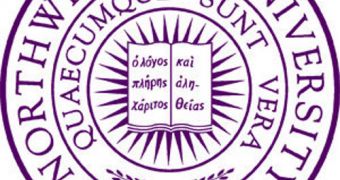A group of investigators from the Northwestern University, in the United States, has recently developed a new nanoscale fabrication technique, that could mean for the industry what the desktop printer meant for printing and information transfer. The method, called beam-pen lithography (BPL), uses about 15,000 tiny beams of light to produce nanoscale structures from various substrates, the group reports. Details of the accomplishment have been published in the August 1 issue of the esteemed scientific journal Nature Nanotechnology.
“It's all about miniaturization. Rapid and large-scale transfer of information drives the world. But conventional micro- and nano-fabrication tools for making structures are very expensive. We are trying to change that with this new approach to photolithography and nano-patterning,” explains the director of the Northwestern International Institute for Nanotechnology, Chad A. Mirkin. He is also the George B. Rathmann Professor of Chemistry in the university's Weinberg College of Arts and Sciences.
He explains that the innovative technique could be used to produce prototype circuits, optoelectronics and medical diagnostics with tremendous ease, thus lowering the costs usually associated with these processes considerably. Other potential applications in the fields of electronics, photonics and life sciences industries are also possible, the expert adds. He goes on to explain that BPL allowed the Northwestern team to produce 15,000 Chicago skylines at the same time, in about half an hour. The end product covered a few square centimeters of space, even though the skylines were produced at the nanoscale.
BPL also has nano- to macroscale resolutions, and this capability really makes it stand out from its competitors. According to the Northwestern crew, other nanopattering technologies, such as electron-beam lithography (EBL), have low throughput and can only produce a single pattern at a time. The secret to the new technology is that the pens use light to carve up patterns on a light-sensitive surface, rather than using chemicals.
“Another advantage is that we don't have to use all the pens at once -- we can shut some off and turn on others. Because the tops of the pyramids are on the microscale, we can control each individual tip. Such an instrument would allow researchers at universities and in the electronics industry around the world to rapidly prototype – and possibly produce – high-resolution electronic devices and systems right in the lab. They want to test their patterns immediately, not have to wait for a third-party to produce prototypes, which is what happens now,” Mirkin concludes.

 14 DAY TRIAL //
14 DAY TRIAL //